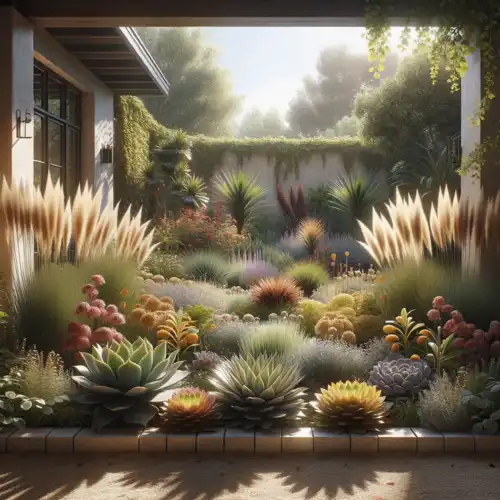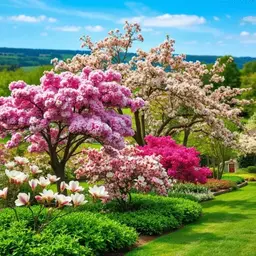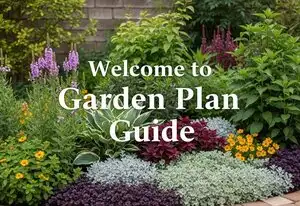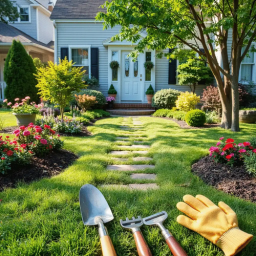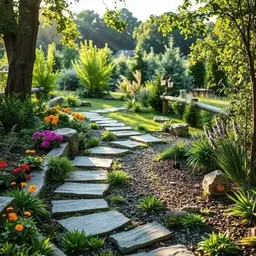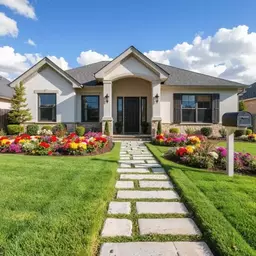Are you tired of spending every weekend in the garden, only to see the same weeds and overgrown plants? Embracing low-maintenance landscaping could be your answer to a beautiful garden that doesn't demand constant attention. Discover how strategically chosen plants can transform your outdoor space into a vibrant retreat that you can enjoy without the stress!
What You Will Learn
- Low-maintenance plants can significantly reduce gardening costs and time spent on upkeep.
- Many low-maintenance varieties are drought-resistant, promoting water conservation and lower bills.
- Choosing native plants not only simplifies care but also supports local ecosystems.
- Identifying your gardening goals can help you select the right plants for your lifestyle and needs.
- Basic care techniques, such as proper watering and soil maintenance, are essential for the success of low-maintenance plants.
- Utilizing interactive tools can assist you in personalizing your plant selections based on your specific gardening conditions.
Key Benefits of Low-Maintenance Plants
Low-maintenance plants offer significant advantages for homeowners looking to simplify their gardening efforts. The following visual summarizes the key benefits:
Cost-Effective
Fewer maintenance tasks lead to lower gardening costs over time.
Water Conservation
Drought-resistant plants help reduce water bills.
Less Stress
Enjoy a beautiful garden without the worry of constant upkeep.
Supports Local Ecosystems
Native plants contribute positively to local environments.
Understanding the Importance of Low-Maintenance Landscaping
When it comes to creating a beautiful garden, many homeowners feel overwhelmed by the effort it takes to maintain it. At Garden Plan Guide, I completely understand that sentiment! Embracing low-maintenance landscaping can be a game-changer—allowing you to enjoy your outdoor space without spending endless hours on upkeep. Let’s dive into why choosing low-maintenance plants can make gardening more enjoyable.
One of the greatest benefits of low-maintenance landscaping is the time and energy it saves you. Imagine having a garden filled with vibrant colors and textures that require minimal care! By selecting the right plants, you can create a thriving ecosystem that enhances your home’s curb appeal with trees while letting you spend more time relaxing in your garden.
The Benefits of Choosing Low-Maintenance Plants for Your Garden
Low-maintenance plants offer numerous advantages that make them ideal for busy homeowners. Here are some key benefits:
- Cost-Effective: Fewer maintenance tasks mean lower gardening costs over time.
- Water Conservation: Many low-maintenance plants are drought-resistant, reducing your water bill.
- Less Stress: Enjoying a beautiful garden without the worry of constant upkeep is a huge relief!
In my experience, one of the best parts of low-maintenance gardening is discovering plants that thrive naturally in your local environment. This not only simplifies care but also supports local ecosystems. So, you can feel great knowing your garden is part of a bigger story, contributing positively to nature!
Considering building your own rock garden as part of your low-maintenance landscape could be a great option to explore adding unique textures with minimal upkeep.
Identifying Your Landscaping Goals and Needs
Before you jump into selecting plants, take a moment to think about what you want from your garden. Do you want a space for entertaining, a sanctuary for relaxation, or a vibrant area for butterflies and bees? Assessing your goals will help streamline your plant choices.
Here are a few questions to consider when identifying your landscaping needs:
- What activities do you envision in your garden?
- How much time can you realistically dedicate to maintenance?
- Are there specific colors or themes that inspire you?
By answering these questions, you'll create a clearer vision for your garden. At Garden Plan Guide, I encourage you to take your time during this stage—reflecting on your goals can pave the way for a successful and satisfying gardening experience!
Here are some frequently asked questions to help you further understand low-maintenance landscaping:
FAQs: Low-Maintenance Landscaping
Engage with Your Garden
Have you ever thought about how your garden can reflect your personality and lifestyle? Choosing low-maintenance plants not only simplifies your gardening routine but also allows you to express yourself creatively. Consider the following:
- Which colors bring you joy and calmness?
- Do you prefer a wild, natural look or a more structured design?
- How can you incorporate local wildlife-friendly plants to attract birds and butterflies?
Reflecting on these questions can deepen your connection to your outdoor space. Let your garden be a canvas for relaxation, enjoyment, and personal expression!
Summarizing Key Insights on Low-Maintenance Landscaping
As we wrap up our discussion on low-maintenance landscaping, it's clear that choosing the right plants can make all the difference! Not only do low-maintenance plants save you time and effort, but they also promote a healthier environment. By focusing on plants that require less water and care, you can create a beautiful garden that allows you to enjoy your outdoor space without constant upkeep.
When selecting low-maintenance plants, it's essential to consider factors such as climate, soil conditions, and sunlight availability. For instance, decorative trees for small gardens are a fantastic choice because they thrive in local environments and support local wildlife. Plus, incorporating drought-tolerant varieties is a great way to conserve water while keeping your garden lush!
Reviewing the Benefits and Care of Low-Maintenance Plants
Let's highlight some key benefits of low-maintenance plants:
- Less time spent on gardening tasks
- Lower water usage, leading to conservation
- Support for local ecosystems through native species
- Fewer pests and diseases due to hardiness
Taking good care of these plants is crucial for them to thrive with minimal effort. Basic watering routines and proper soil maintenance can go a long way. Remember, it's not about ignoring your garden; it’s about working smarter, not harder!
Final Thoughts on Choosing Plants for Hassle-Free Gardening
In my experience at Garden Plan Guide, I’ve found that the right selection of plants can truly transform a space. Think about your lifestyle and how much time you can dedicate to your garden. By choosing plants that align with your needs, you can create a stunning landscape that offers peace and beauty without the fuss!
Ultimately, low-maintenance landscaping is all about enjoying the process. Whether you’re sipping coffee in your vibrant garden or hosting friends under the stars, the right plants can enhance your outdoor experience. So, what are you waiting for? Let’s get started on your hassle-free gardening journey!
Additional Resources and Tools for Your Landscaping Journey
Interactive Tools for Personalized Plant Selection
As you embark on this exciting landscaping adventure, having the right tools can make all the difference! At Garden Plan Guide, we offer various resources that help you identify plants that suit your specific conditions. Here are some tools to check out:
- Interactive plant selection guides
- Garden design templates for inspiration
- Soil testing kits for optimal growing conditions
When considering plants that boost curb appeal, remember that low-maintenance options can provide beauty and require less work.
FAQs: Common Questions About Low-Maintenance Plants and Care
It’s natural to have questions when diving into low-maintenance gardening. Here are some common queries I often encounter:
- What are the best low-maintenance plants for my climate?
- How often should I water low-maintenance plants?
- What should I do about pests in a low-maintenance garden?
- Can I combine different types of low-maintenance plants?
Don't hesitate to reach out if you have more questions. At Garden Plan Guide, I’m here to support you every step of the way as you create the garden of your dreams!
Recap of Key Points
Here is a quick recap of the important points discussed in the article:
- Low-maintenance landscaping saves time and energy while enhancing curb appeal.
- Choosing low-maintenance plants is cost-effective and promotes water conservation.
- Consider your landscaping goals and the amount of time you can dedicate to maintenance before selecting plants.
- Native plants thrive in local environments, support wildlife, and require less care.
- Basic care routines, such as proper watering and soil maintenance, help low-maintenance plants thrive.
- Utilizing interactive tools and resources can assist in selecting the right plants for your specific conditions.

